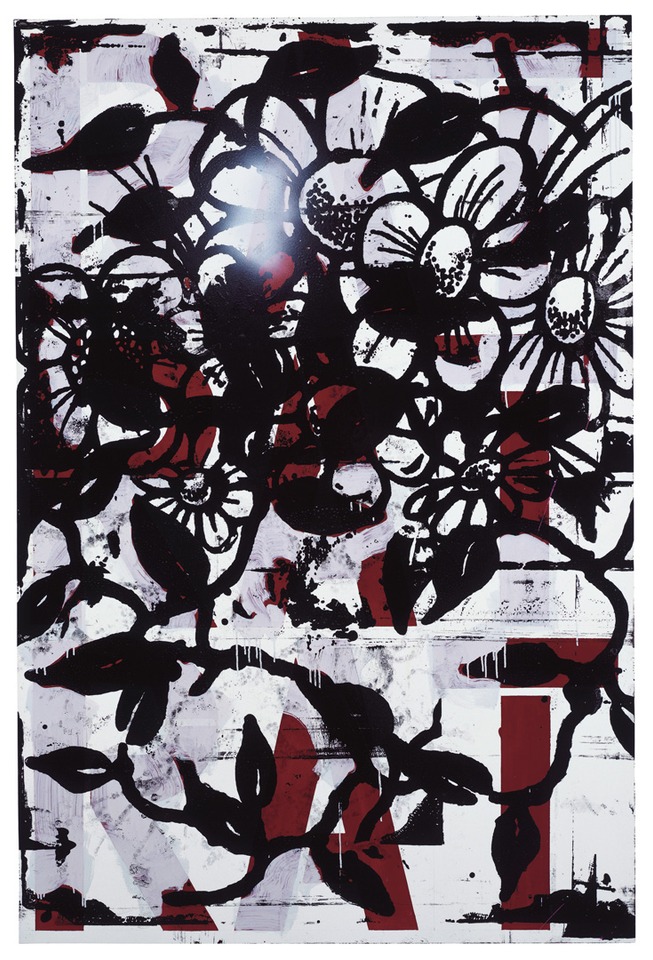Lines Written in Early Spring

In a new body of work, Olaf Breuning uses wood to capture the natural world in both its calm and aggressive glory
Mitchell Anderson is an artist based in Zurich. Recent institutional exhibitions include Kunsthalle Bern (2021), Kunsthalle Zurich (2020), Fondazione Converso and MAMCO, Geneva (2019). He is a frequent contributor to international arts publications and has operated the project space Plymouth Rock, in Zurich, since 2014.
For the past couple decades the work of Olaf Breuning has been marked by an exploration of his (and by default, our) place in the universe. If at times the work appeared jokey, he was echoing a world full of ridiculous contradictions, emerging during the early years of a millennium marked not by hoped-for utopian ideals, but further global environmental destruction, more wars and a technological breakdown of socialization.
Breuning is an artist without a firm monogamy to any one medium, connecting him to the modernist avant-garde of his home country. Where someone like Sophie Taeuber-Arp roamed endlessly across the applied and fine arts, he experiments and succeeds traversing film, photography, outside collaborations, drawing and more. His newest body of work, an ongoing series of large, tactile and vibrant paintings, is, like most of his pursuits, both a highly singular and fully integrated extension into a body of work that is always timely, visually captivating and straddling the world of the personal and the produced.
These new paintings are many situations at once: unique woodblock prints, constructed compositions of color and form harnessing a unified vocabulary, large landscape paintings depicting the organic world in both its calm and aggressive glory and warnings or documents of mankind’s continued yet altering place in wide natural environments. They are deeply seeped, in both form and content, in the history of western art, yet so clearly of our unique time. How else does an artist known for his extensive collaborative works come to imagine and solve such a solitary process, as painting, except during the universal conditions of the past year or so? It’s clear when standing in front of these paintings that the artist has learned how to create and enjoy that production, it’s cause for hope.
Breuning initially created a (constantly expanding and evolving) vocabulary of recognizable shapes and forms inspired by the natural world peeking in the windows of his isolated studio in upstate New York. Raindrops, trees, tornados, flora, waves, fire and a simple human figure are rendered in their most base form recalling prehistoric cave marking and hieroglyphics as much as our ubiquitous emojis. Carved brusquely out of wood they are pressed against the picture plane with thick, saturated acrylic in a vital update of an artistic process two millennia old and best known from visits to the more historic wings of the world’s art museums. Yet, unlike Han dynasty printed silks or 15th century German woodcuts, Breuning’s works are painterly, grand in scale, and completely of their own time. Within them he manages to maintain a playful ease within configurations that are strongly composed, as images are built up and other shapes appear around them to fill the canvas. The tangible way the paint lifts off the surface and the way the image wraps around the painting’s edges speak to a desire and an admission of their being objects, not merely images, confronting the viewer.
It’s perhaps a sly humor that Breuning uses wood to explore and manifest these depictions. The natural world provides the direct and literal building blocks for its own portrayal. Or, Breuning, who has a career-long engagement with nature, knows that it takes beautiful ingredients to present the world not built by man. If we contrast these works to an earlier precedent of stamped nature, Christopher Wool’s mid-90s series of cool black enamel overprinted flowers, we see more clearly the desire and success on Breuning’s part in managing to capture the warmth and rhythm of the environment. Whether showing flowering cacti baking in the desert in First Plant or a giant sun blazing over a landscape mixed with hedges, trees and stones in *Sun and Blue Cloud *(all 2020) the paintings replicate the feeling of wonder that only grand national parks and forests can have on the human psyche.
Within that wonder one can also decipher Breuning dealing with tacit facts of one’s interaction with nature at the beginning of the 21st century. In the latter painting only a small singular cloud dots the sky, perhaps suggesting drought across the browning countryside. In Big Drops one notices that the giant titular splashes are not only the clear blue of fresh rain, but yellows and wine reds suggesting pollution raining down on the lone tired tree in a darkened foreground. In Human and Fire the red and orange hills behind the titular objects may depict the engulfing forest fires that fill our news feeds more and more every summer.
And, yet, individually and as a whole this new project of Breuning is one that produces beauty. It does not so much mask a hidden content as it admits to it while still managing to create and find awe in the world and its cycles around us. That lone everyman standing next to the flames is mythic and heroic. The theft of fire heralds the beginning of world civilizations both literally and across ancient texts: Prometheus, Coyote, Shiva. In a related sense we might also record Breuning’s name, as with these paintings he too finds the power of control over a new element and gifts it to the world.
by Mitchell Anderson




